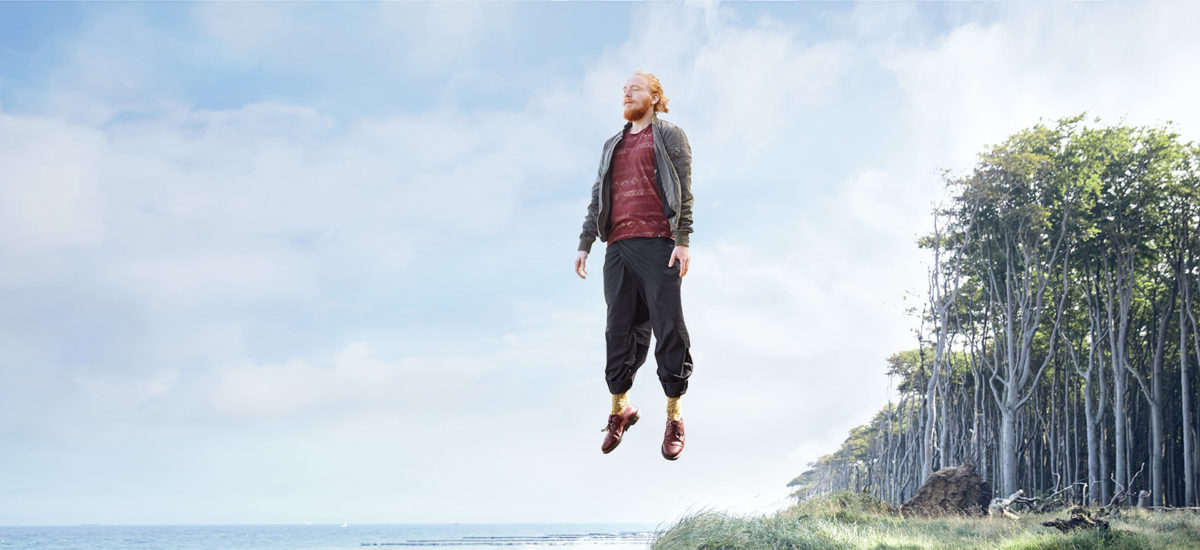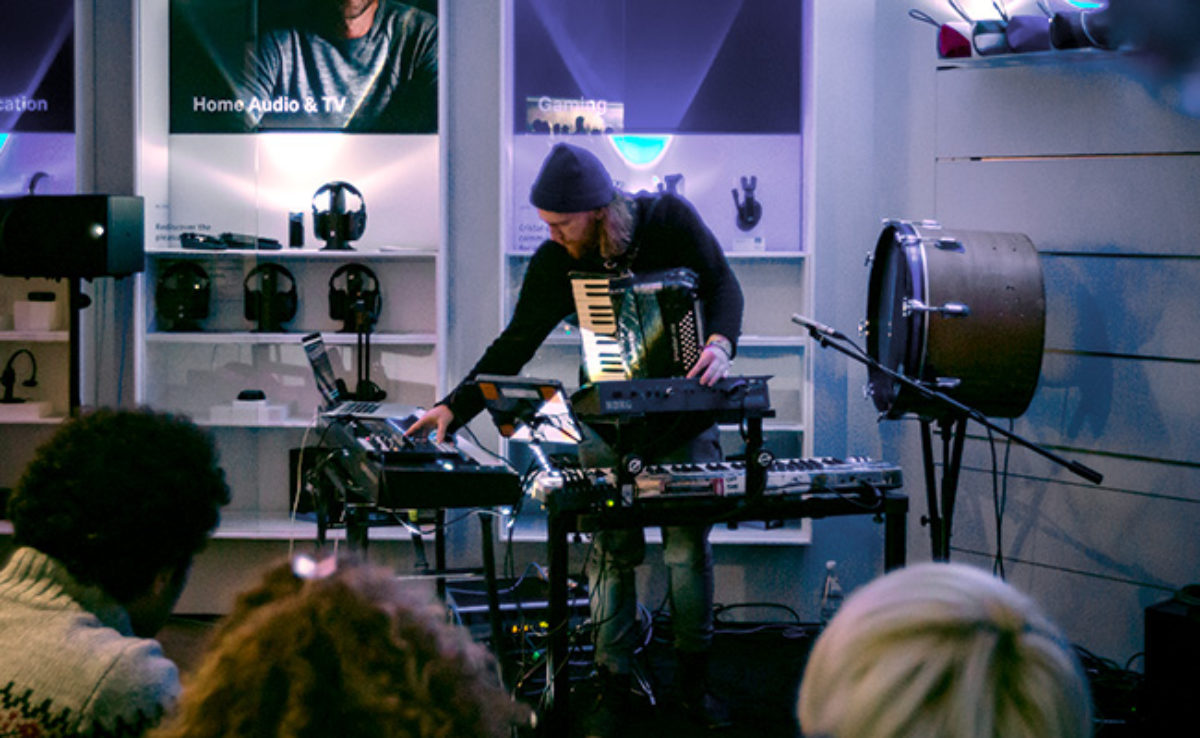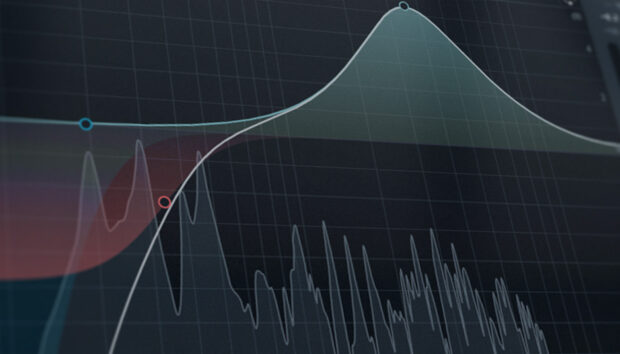
Hamburg-born Niklas Paschburg packed his studio up and moved to a beachfront hideaway to create his ambient electronic album ‘Oceanic’. With the sand and sea of the Baltic at his doorstep, he weaves the sounds of the ocean through his cinematic piano-led opus. Combining pads, field recordings, percussion and both acoustic and sampled pianos, Paschburg uses Native Instruments effects and sounds to realise his dream-like soundscapes. An upcoming tour will see him pack up the studio, and his KOMPLETE KONTROL S88, to delight and inspire audiences with genre defying performances.
Learning from the best
I started playing piano when I was five years-old by learning the old masters; Beethoven, Mozart, Bach, and all those German composers. After that I moved more in a jazz direction and also started to play a little bit of pop. Then when I was 12 or 13 years old I was composing my own music, starting to discover melodies and harmonies. My grandparents bought me a simple microphone and a small four-track recorder and I started to try and compose, although at that time I didn’t even have a computer. Once I got my first PC with Windows 98, I started to use Cubase, which I’m still composing with in 2018. This was the first time I’d encountered MIDI in any form. I do use Ableton for my live shows which I find very inspirational, but I’ve always been very happy with Cubase for my studio. I find it so easy to use, especially after working with it for ten years.
Taking the music on the road
Prior to performing live I didn’t really know how to translate my very studio-based music to an environment with a live crowd. But for my last short EP I started with live looping in front of an audience, looping the piano and then layering different instruments in to get close to the sound of the recorded versions. That was my solution to try and translate the studio album into a more interactive process but I got tired of just using samples and not much hardware. For the new shows in 2018 I’m trying to expand on that; live looping is still my main tool but I’m also using a sequencer on stage. I play as much as I can live but will be combining short bass samples, for example. It’s a bit more interesting for the audience to see rather than just watching me press one button. I’m using a Novation Launchpad and Launch Control to trigger FX. I also take a couple of synthesizers on stage; the Korg MS2000 and an Oberheim Matrix 6R – I’m so in love with the sounds of that synth.
Live setup
For the live piano sounds it really depends on what the venue has available. I always try to get a real upright piano on stage but for the upcoming tour I’ll actually be taking the Komplete Kontrol 88 with me as it has a really nice feel to the keys. Under the fingers it’s really close to a grand piano, unlike my upright piano, which is much lighter. I find the rotary controls are especially good for mixing in effects via Ableton Live via the MIDI learn function on there. They talk to each other really well. For the piano tone I previously used Synthogy’s Ivory II pianos and I’ve also tried the Una Corda library in the past but the new album has a different kind of piano sound so it’s time for a change. I’ve picked up The Gentleman, which I’m really excited about as it has such a good range of timbres.
The audience experience
With the live shows, it’s sometimes difficult for me to explain that my music isn’t just coming from playback on a laptop. Sometimes people come up to me after the show and ask “What did you do up there?” They wonder if the music is pre-recorded, looped or all played live. But I have the feeling that most of the audience are keen to find out for themselves what I’m actually doing and that makes it interesting for them.
Oceanic influences
The new album Oceanic has a bit more of a pop flavour than my previous work, with influences from Bon Iver. I really love his music and production. I’ve also been listening to a lot of new music from Bonobo and I especially dig “Bambro Koyo Ganda” so I think that was also an influence, especially on the more electronic elements of Oceanic. It’s difficult because I really just try and do what I do and go with a feeling. I don’t want to put myself into a particular genre but I guess if I had to be pushed I’d say that it’s piano music with classical but mixed with ambient and electronic. A lot of people say my music is neo-classical but sometimes I don’t feel good being put into that box because if you remove the piano from my music it’s not really neo-classical at all. It’s more like a mixture of different elements.
Sampling the surf
I think Oceanic has a very cohesive sound, and much of that is because of the field recordings that I used. I recorded it on the edge of the Baltic Sea, right next to the ocean. It was a very inspirational location and really the whole album is about the water. I brought my bass drum, synths and keyboards to the temporary house and built a little mobile studio using the piano that was already in the house. I literally put the microphones outside and recorded the waves and wind. Sometimes I left the recordings in their natural state but occasionally I did process them. For example, “Appear” I added some distortion from Driver at the beginning and as the track develops I dialled the effect back so that it blends into a more natural sound.



A typical composition
“Spark” is a good example of my how my writing process works. I start just with the piano, playing around to find harmonies and melodies. There’s a delay and tape delay on the piano from Guitar Rig and distortion from Driver, which I’ve run through the physical tape machine and then exported back into Cubase and chopped up. For this album I’ve dived more into sound design, looking for interesting sounds that fit around the piano. I mainly use my bass drum for rhythmic elements. It’s tuned really low and has some felt on the skin but to be honest it’s not a great drum but I’ve fallen in love with it. You do need a lot of post production to make it sound good because otherwise the sound is just too basic.
Kontakt as a creative tool
I’ve used Kontakt quite heavily as I sampled my upright piano in different ways. I’ve used bowed string samples and loaded those into Kontakt to play them. I find the possibilities of using Kontakt as a sampler very flexible as it can do everything in one place; layering samples, changing velocity layers and adding FX.
Delays on delays
I love all the effects of Guitar Rig and use it in many different ways for distortion and other processing. I’m starting to use more chorus on the new music and it sounds especially good on piano. I do think the tape delay presets are amazing on waveforms and pads. Quite often I export that processed audio and play it back in a physical tape unit, a Telefunken Magnetophone 204, to give that wavering analogue effect. So it’s like having multiple delays playing simultaneously – a favourite technique of mine.
Finessing the sounds
I’m always looking to combine the right elements of a track across the frequency spectrum and helping them to find their place in the mix. Because the piano is a full range instrument I tend to use other instruments to fill in the gaps with light pads, bass and drums. I recorded everything alone when I was working in the mobile studio. This was the first time that I’ve had a producer for the whole album process. Gijs van Klooster came on for the post-production side and really helped me with the mixing. The mastering was handled by an external studio.
Vinyl as a visual medium
The new album will be released on vinyl as well as the usual formats. I just started collecting vinyl a few years ago because when I was a child I was surrounded mostly by CDs. It’s really through the music production side that I’ve learnt to appreciate the sound of vinyl. I really do notice the difference between the sound of vinyl and CDs and I much prefer that analogue sound. Also the larger artwork is a big plus for me. It’s been great to be able to explore my sounds visually on that bigger medium of an LP and show the work of my artist friends Natalia Luzenko and Paolo Proserpio, who both have great ideas. I also think YouTube is going to be a growing platform for me and I’m currently working on the visuals for upcoming singles “Fade Away” and “Sand Whirling”. I’m looking forward to working with more amazing directors.
On being a young artist
I feel it’s important to find your own way. I always encourage young artists to go at their own rate and really explore what they want to do, trying lots of new things. I don’t know if I will always play piano or even write music but I’ve found my way for now. I try to hear myself and ask what I’m really interested in and then find a solution that satisfies that desire. You always need passion to do what you really love. The best advice I’ve been given was from my parents: I stopped my education a few years ago and I was really worried about what I would do but they supported me and told me to just try it, at least once. Because then you can say at least you tried and failed – that’s important.
The next step
For my upcoming music maybe the piano won’t be the main focus. I’ve just started to work on destroying the sound of my upright model, using distortion and compression and creating some really strange sounds. I’d also like to collaborate with singers. Maybe I’m a bit too scared to do that at the moment but I’d really like to try it. Perhaps something with a French female singer as I adore the language. Maybe move away from the piano? Let’s see how things go.
live-photos: Giovanni Dominice















